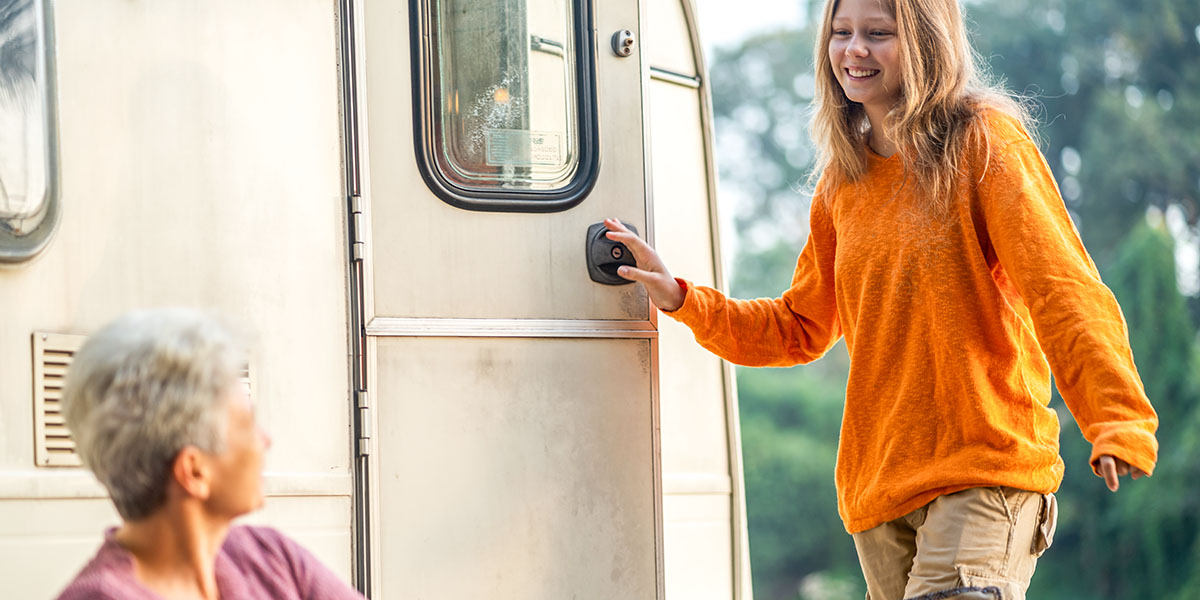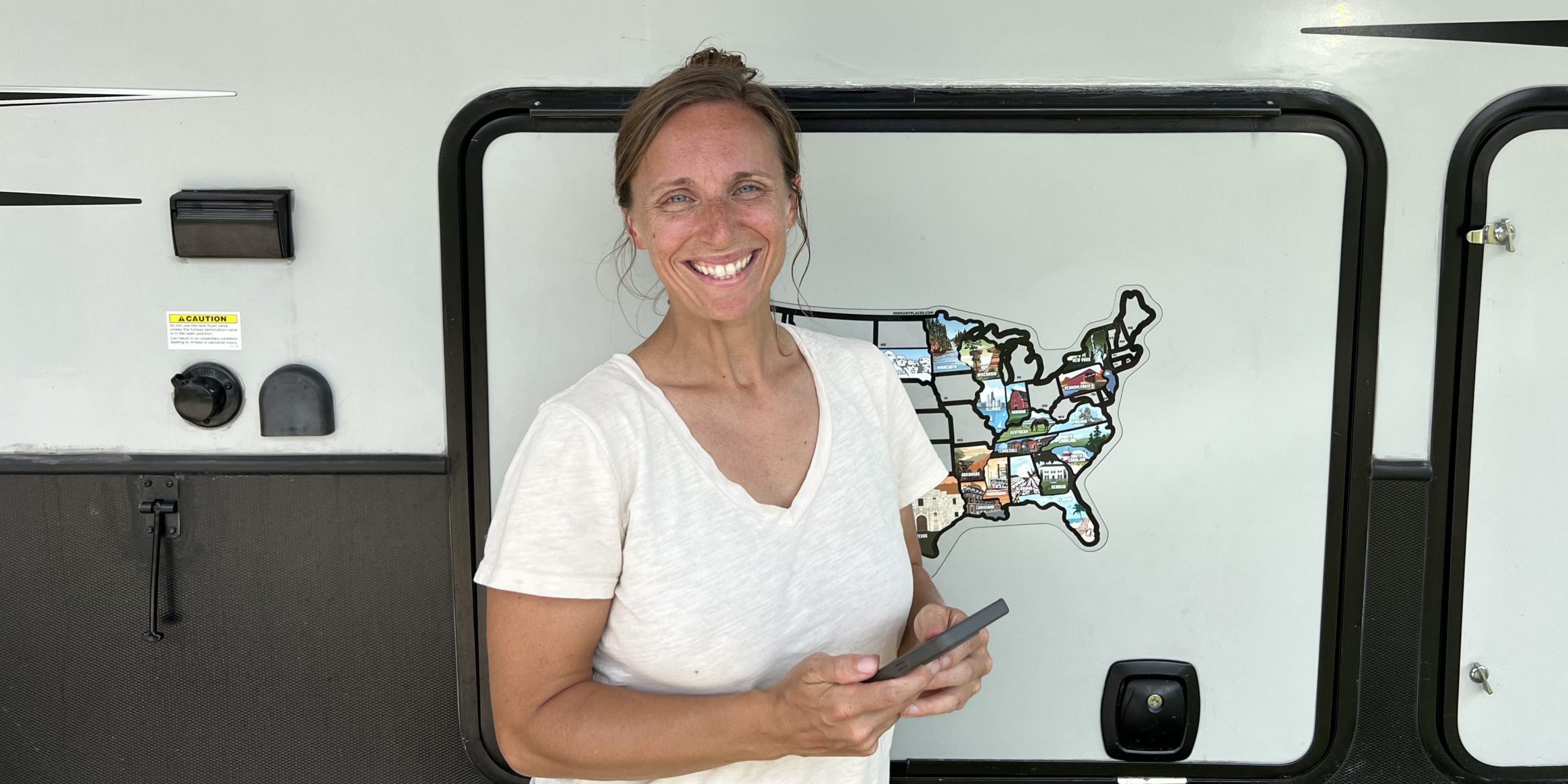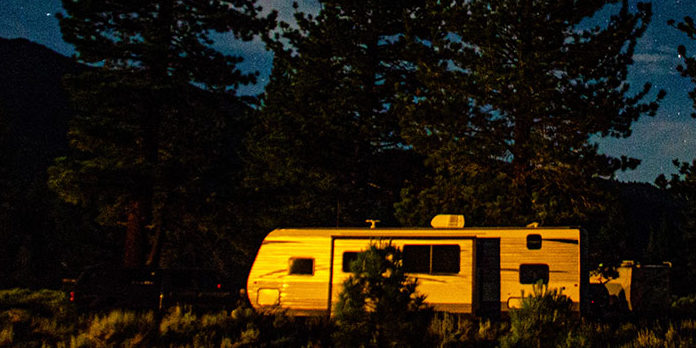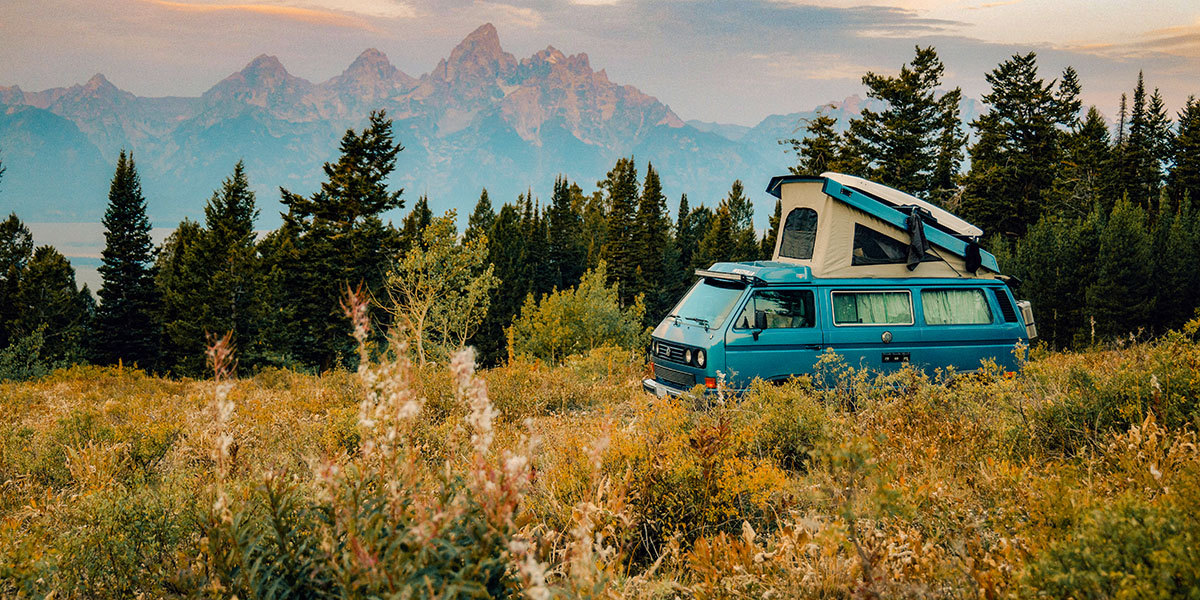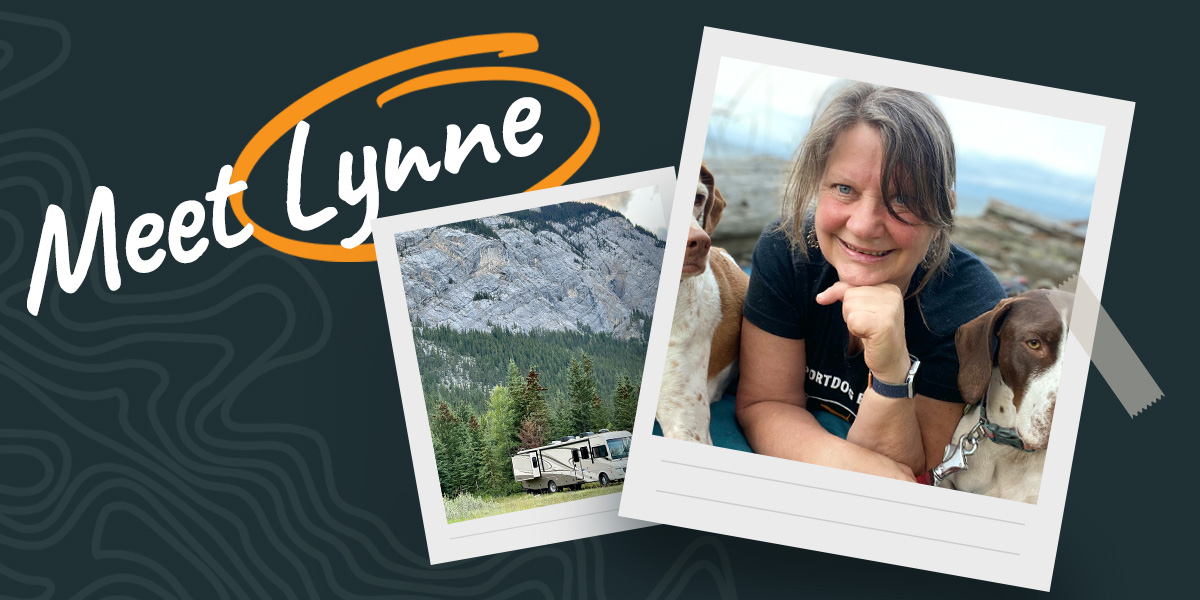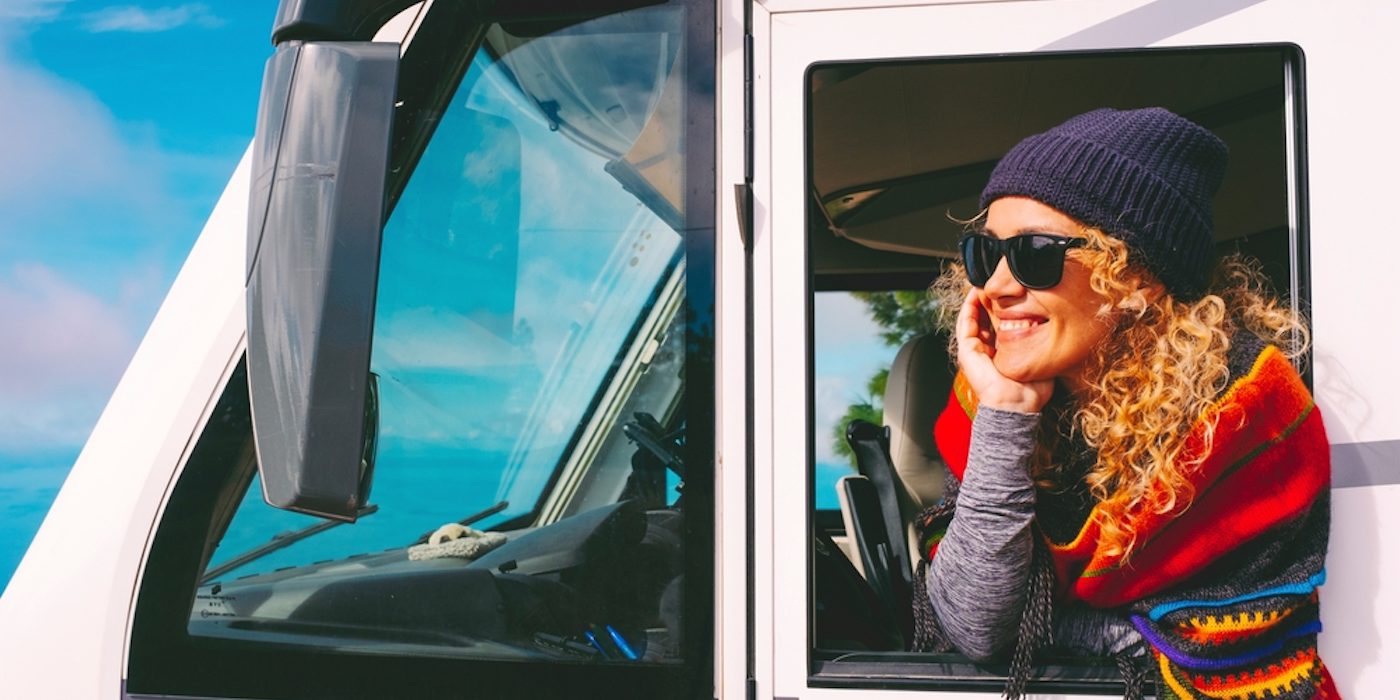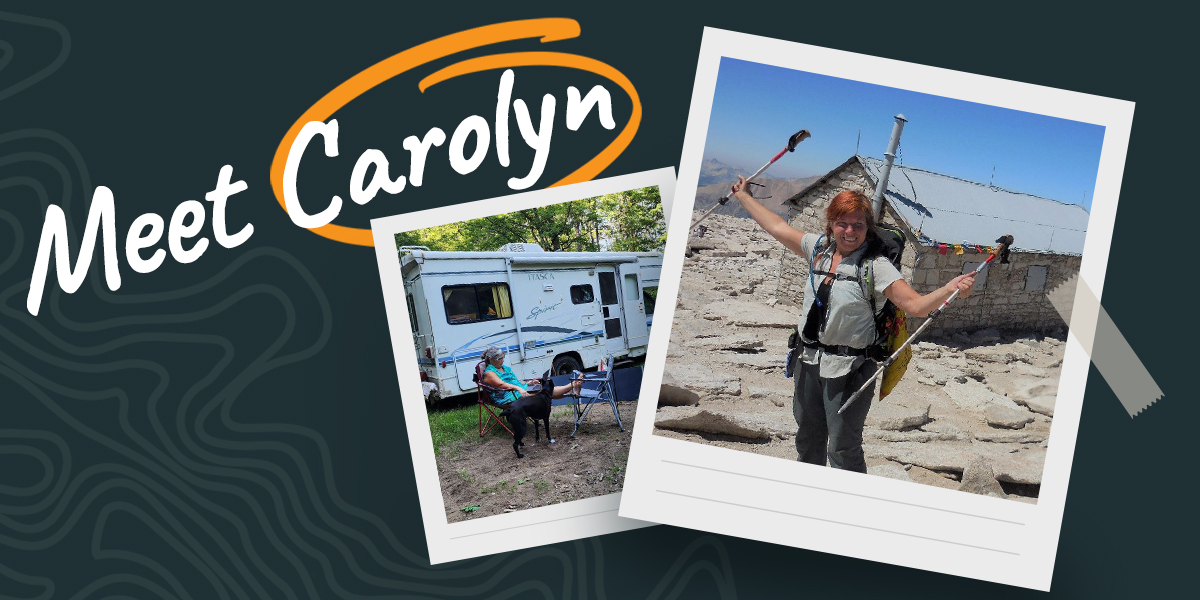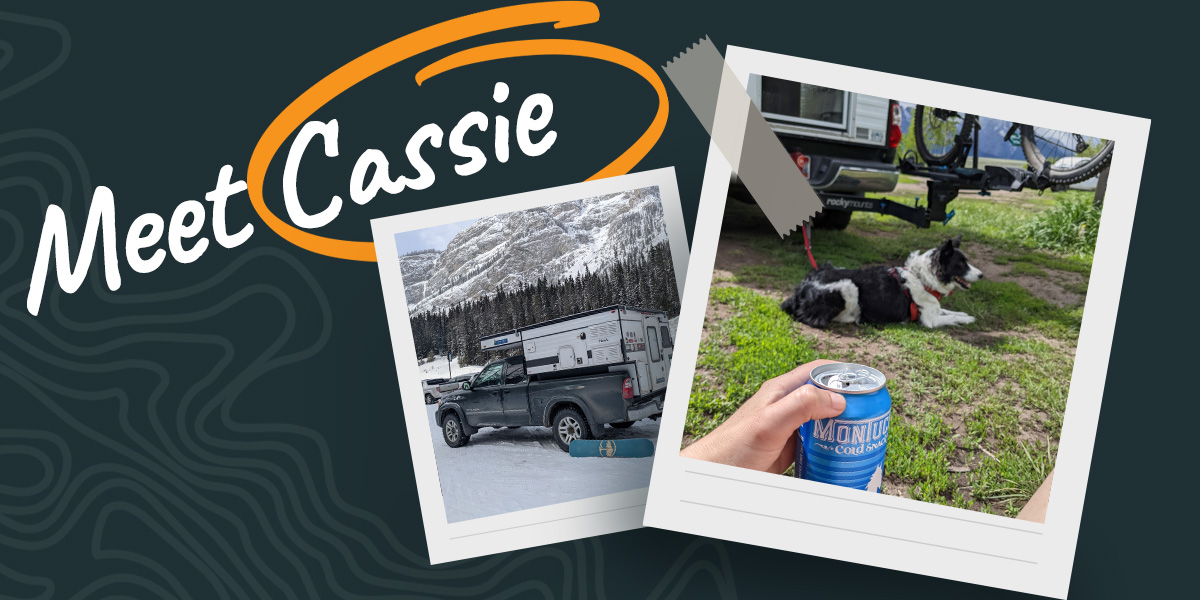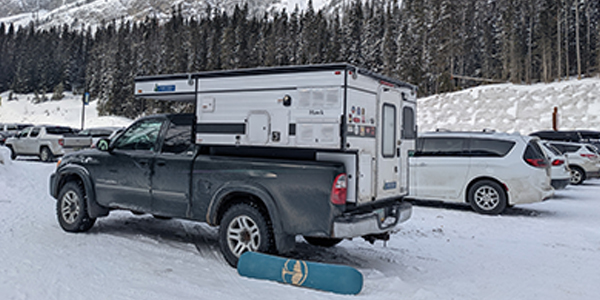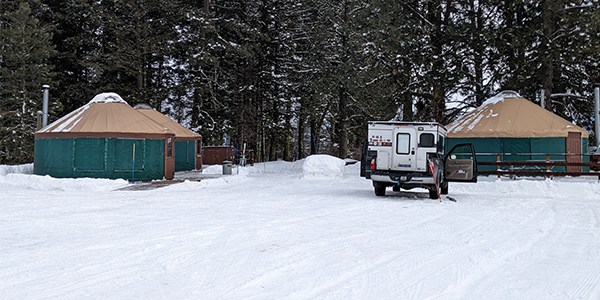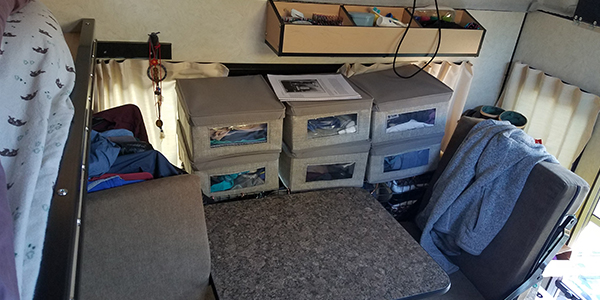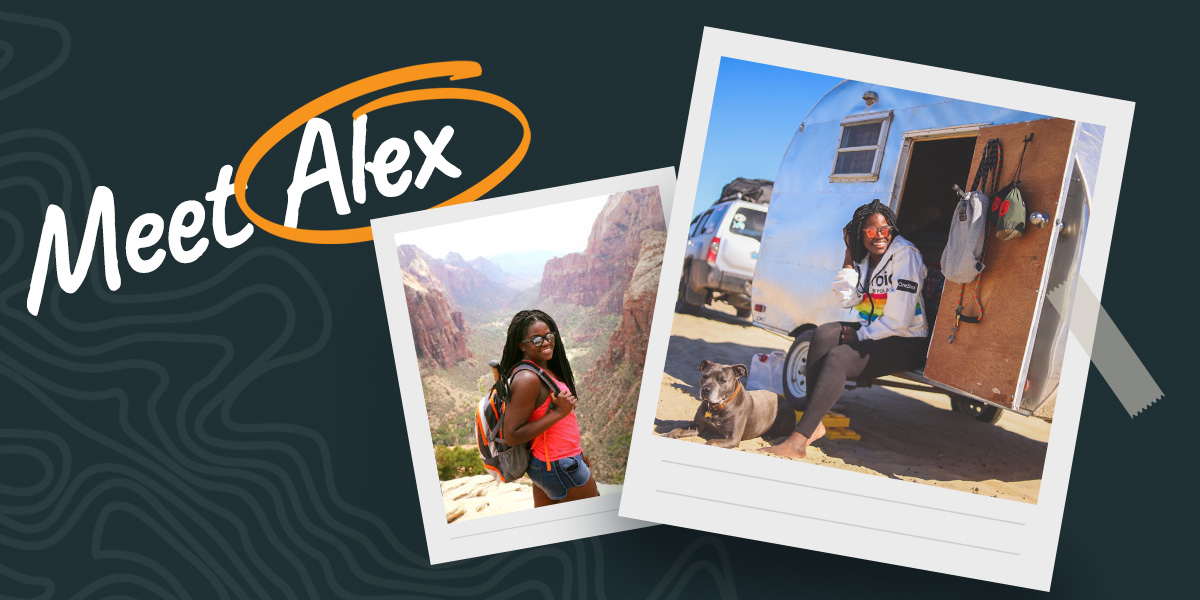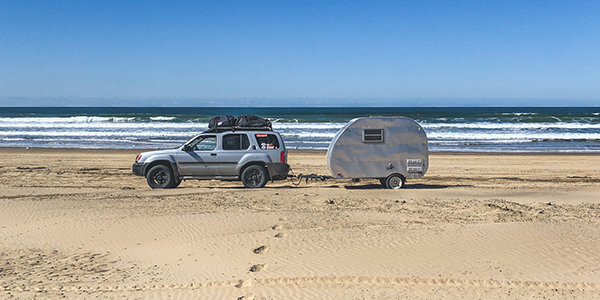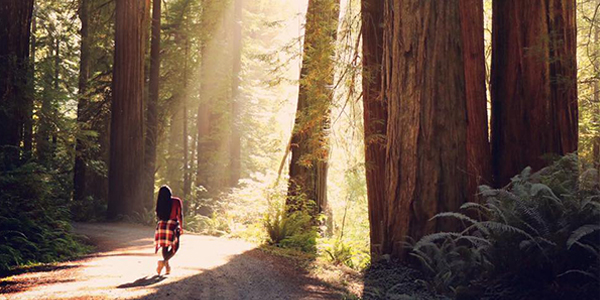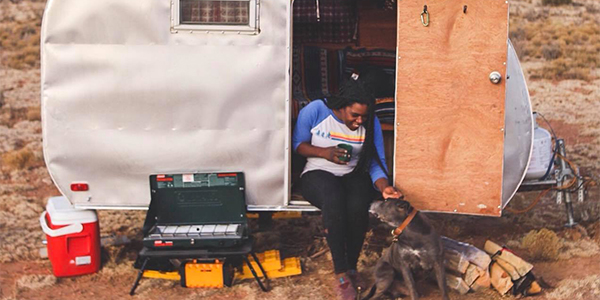s If you had to use one word to describe Carolyn, it would be authentic. Most social media stars advertise an inflated, superficial version of themselves. But Carolyn brings authenticity to her platform like a cloud brings rain. It’s one of those things you don’t realize you need until you get a little spoonful of it.
More please.
Carolyn’s journey in her RV is enmeshed with the social media platform. On YouTube, she offers a window into her world. There, she inspires women to break through any barriers inhibiting them from following their dreams. She encourages women to be themselves — just as they are. Stripped of makeup, hair dye, fancy clothes and sculpted bodies. Carolyn invites us to tap into a raw and authentic version of ourselves — and to celebrate it. Talking in her videos and sharing her story her, her words spin like a spider’s web. And it is oh-so-easy to find yourself sticking — happily — to the spare but powerful fiber of woven through her life.
As part of Women’s History Month, we’re sharing stories just like this — straight from the world of female solo RV campers. These women are more than digital adventurers and influencers. They are as real as earth and fire. They are as authentic and refreshing as the air you breathe or the rain on your face. And of that, we just can’t get enough.
This is Carolyn’s story.
“This is not the life that I wanna live.”
Once upon a time, Carolyn lived in a padded, conventional world in California. She made over six figures a year.
“I had a fancy life. I spent a lot of money on shoes, purses, and stuff like that … But in retrospect that wasn’t me.”
It turns out, money doesn’t make you happy. And even with all that money, she was still — somehow — tens of thousands of dollars in debt. Even making what she did, she found herself paycheck to paycheck.
The spark that lit the fire of Carolyn’s RV life backpacking. She covered 256 on the John Muir Trail in California. This was her first long distance solo backpacking trip. Living out of a backpack for 30 days changed her life. I changed her perspective. She stepped back into her apartment and asked herself, “What the hell am I doing? This is not the life that I wanna live.” She got off the trail in September and was in an RV in April. She never looked back.
As a recovering alcoholic and drug addict, the John Muir Trail (JMT) played a part in her journey towards self-authentication. Carloyn shares, “The JMT was cathartic for me in my recovery. It was very healing. I mean — I can’t explain — it was the most life-changing, rewarding experience. It was amazing. It completely changed my life.”
Carloyn recalls, “When you’re on the trail that long, living out of a 40-liter backpack, and you come back … I looked at all my stuff in my 500- or 600-square-foot studio apartment, like, ‘What the hell am I doing?’ I pay 1,600 bucks a month to store a bunch of stuff I don’t need.
She pauses as she recollects. “All that stuff, it weighs us down. And so I sold everything and bought an RV in five or month months.”

“I got famous-people problems without the money.”
Carolyn’s story is unique in many ways. In stepping away, she actually stepped onto a bigger platform. Today, with over 172,000 followers on YouTube, in some ways, her journey isn’t so solitary. Her background in marketing allowed her to take full advantage of an open niche: a woman traveling alone in an RV. When she first started over nine years ago, no other women were doing it. (At least, not by choice.) After a little strategic marketing and planning, her fourth video went viral. In less than 30 days, she had over 20,000 followers.
“I wonder if it weren’t for my social media platform if I would have been able to do this for so long, alone,” Carloyn muses. “I get a lot of my interaction online from my community.”
From the beginning, Carolyn’s journey in the RV was enmeshed with the platform. That’s both good and bad.
Being a YouTube star isn’t as glamorous as it appears. There’s a dark side. Eight years of stepping on the platform stripped of all pretenses led to more than an increase in followers. There have been death threats, shaming, trolling, and a lot of other muck she has to regularly wade through.
When I first got on the phone with Carolyn for our interview, I asked her where in the world she was. She responded, “Is this on or off the record?”
I didn’t really know what she meant by that, but she explained why she has to be very secretive about her location, being a YouTube star.
“I’m going through a very burnout phase right now. I’m tired of having strangers weigh in on my life.” Carolyn confesses, “I’m tired of having strangers weigh in on my personal choices. I’ve been sharing myself so openly and so authentically for so long, that I have thousands of people — maybe millions of people — who I’ve never met, who feel like they know me. And I’m kind of tired of that to be honest.”
Carolyn can’t even truly enjoy her hometown.
“In my hometown, in Arizona, every time I go out, I get recognized. There’s a big part of me that’s just kind of over it.” It’s especially hard, Carolyn says, because, “I got famous-people problems without the money or the fame. Famous people have the resources to shield themselves.”
But for Carolyn, it’s all on her.
“This is what nature intended.”
One of Carolyn’s striking attributes is her radiant authentic energy. It’s a breath of fresh air to speak with someone who has shed all pretenses of superficial impressions. She is completely herself. And I think that is the most valuable thing she is offering other women: the encouragement to be 100 percent yourself.
“Just let us get gray, and let us have our wrinkles, this is what nature intended,” she says. As beautifully refreshing and validating as that is for me to hear, for her, it comes with a lot of pushback.
“I’ve gotten a lot of shit for that. People devote a lot of time to shaming me for how I look, and it’s OK.” Carolyn shares, “I have been overweight my whole life. I was bullied all through school for my weight — so, bring it.”
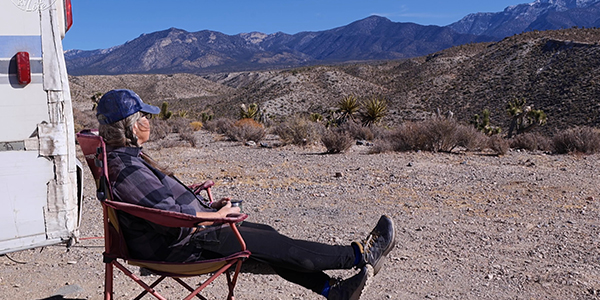
“I remodeled it so it feels like a little apartment.”
Carolyn’s RV journey started with a 29 foot Jamboree. Like everything else, Carolyn doesn’t mince words about it, “It was the biggest piece of crap lemon.”
She paid $8,000 for it and in 18 months she put almost $20,000 into it. And it still had problems. The last straw was when her black tank fell off in Indiana. After that she started shopping through RV Trader and found her dream rig in Albuquerque. It was a 2005 Itasca Spirit Class C with a roomy floorplan on a reliable chassis.
“Even though it’s five feet smaller than the other one, it feels bigger. I love everything about this RV. I remodeled it so it feels like a little apartment.”
The Class C sits on a E 450 Chassis. She paid $14,000 cash for it seven years ago.
“The gas mileage is crap, but what are you going to do about it?” She laughs, “It’s a good RV.”
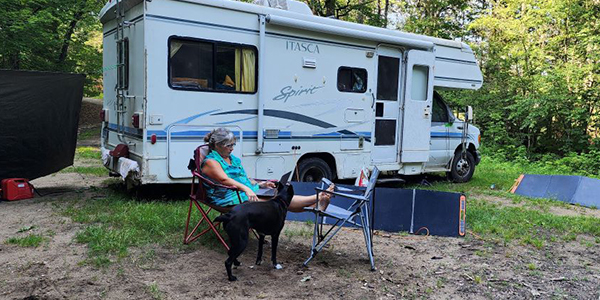
“That guy was going to take me!”
When she was first on the road, she had a dog, Capone. But he wasn’t much of a watchdog. He was great company, but after he passed away, she got another dog that plays the part of a watchdog much better.
“If there’s a critter outside, she wakes me up in the middle of the night.” Carolyn notes, “If anything even comes near my RV, she lets me know.”
After spending 20 odd years on the road, she has learned to trust her gut and her instincts. For the most part Carolyn feels safe, but there was one especially terrifying instance that left her completely shaken.
On her way to Alaska, in British Columbia, she shares, “A guy approached me, and I really think that he wanted to do me harm.” At the time, she was having lunch on the side of a busy highway, not too far out of town with a beautiful view of a canyon.
“I heard a car stop, and a door open. And I was like, ‘Okay, this is probably an older couple stopping to enjoy the view as well.’ But I heard the car door, and I didn’t hear voices.” Carolyn recalls, “I turned around and there was this guy on his tippy toes, peaking into the RV. At the time, I thought he was interested in my RV. I get that a lot. It wasn’t until afterwards I realized he was looking through the windows to see if there was anyone else with me. He kind of walked over very slowly, and didn’t really say anything. He just kind of stood there. And my Spidey Sense went up immediately.”
Eventually he started asking her questions.
“Are you from Nevada?”
And then, “Are you alone?”
Immediately, Carolyn responded, “No, I’m not alone.” She quickly gathered her things and walked towards the door. But the man kept on, “You know, I do tours around the area.”
Again and again she rebuffed his advances at conversation and suggestions. But what was particularly alarming was that after she shut and locked the door, he continued to linger. He sat next to her RV.
Looking back, the part of the story that still surprises Carolyn the most weren’t his actions but her delayed reaction. It wasn’t until about a month later that she did a detailed video about the event. That’s when it sunk in what could have happened.
“Holy shit! That guy was going to take me!” In post, she realized that he was trying to get her in the car. Realizing that, she started crying at how much danger she could have been in. It didn’t even hit her that it happened to her, until she watched the video she made about it. At that point, she reported the incident to the British Columbia Police Department.
These are lessons that she tries to inspire in women: Always believe your gut.
“Unfortunately, the world we live in tells us not to trust that,” Carolyn shares. “So many unhealthy relationships train us not to believe our intuition, and a lot of women have to unlearn that. They have to start to believe in themselves again, and believe in their intuition again.”
“RV life is a healthy risk for me.”
Hearing a story like that, you want to put the question to Carolyn: In a world where you pay for your dreams in blood, sweat, and tears, what’s the real payback of this lifestyle?
Carolyn has her answer ready, “I was never meant to live a normal life.”
Even in college she knew she didn’t want to work a standard day or do anything conventional. For Carolyn, living in an RV gives her that freedom. That life out of the box. “I can be who I want to be. I don’t have to be locked into a nine-to-five.”
Carolyn also needs to be in a place where she can take healthy risks.
“I am the type of person who constantly needs to be challenged.” She says that’s always been part of her nature, “A lot of my addiction was about taking risks. I took a lot of unhealthy risks in my life. And through therapy I realized that in order for me to stay healthy and content, I need healthy risks. And RV life is a healthy risk for me. It allows me to change my scenery as often as I want.” She continues, “It allows me to satiate that need for adventure and risk and excitement — I think even the element of danger —even though that’s kind of gone because I’ve been doing this for so long. It feeds me … I could never go back at this point.”
Just the thought of normal, sedentary life makes Carolyn cringe. Dinners with friends, movies, plays, networking events. She says that all the crap she used to do in San Francisco would just kill her now.
She says the RV life gives her a better alternative. “It just allows me to really feel like I’m really living my best authentic self.”
Carolyn doesn’t make as much money as she did in her past life in San Francisco, but she doesn’t have any debt. And she has her freedom. She knows what she has, “The reward is, and the reason I started this, is that I’m inspiring other women to let go of their fear, to face the things that scare them, and to get out there and do it.
“Not only am I inspiring women to get out there and chase their dreams, but to kind of shed a lot of the expectations that society puts on us as women. And that’s extremely rewarding.” Carolyn takes a moment and says, “When I meet women that literally cry and tell me how I’ve changed their lives, and how watching me has helped them do things they never thought they could do: That is the reward.”
That, indeed, is a worthy reward. Something meaningful. Something earned. It is something so real, so authentic that it can change a life.
